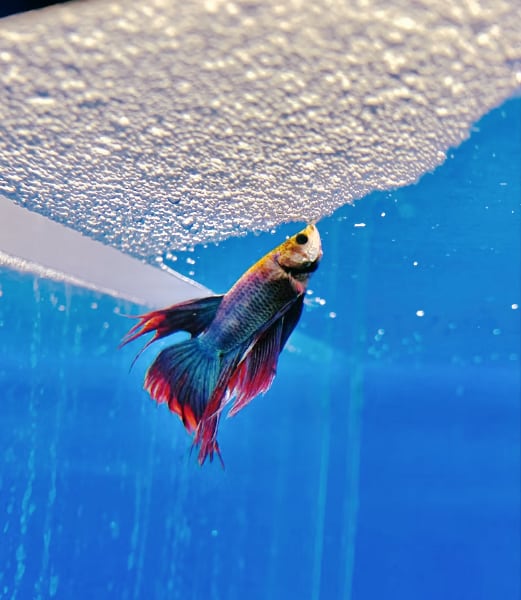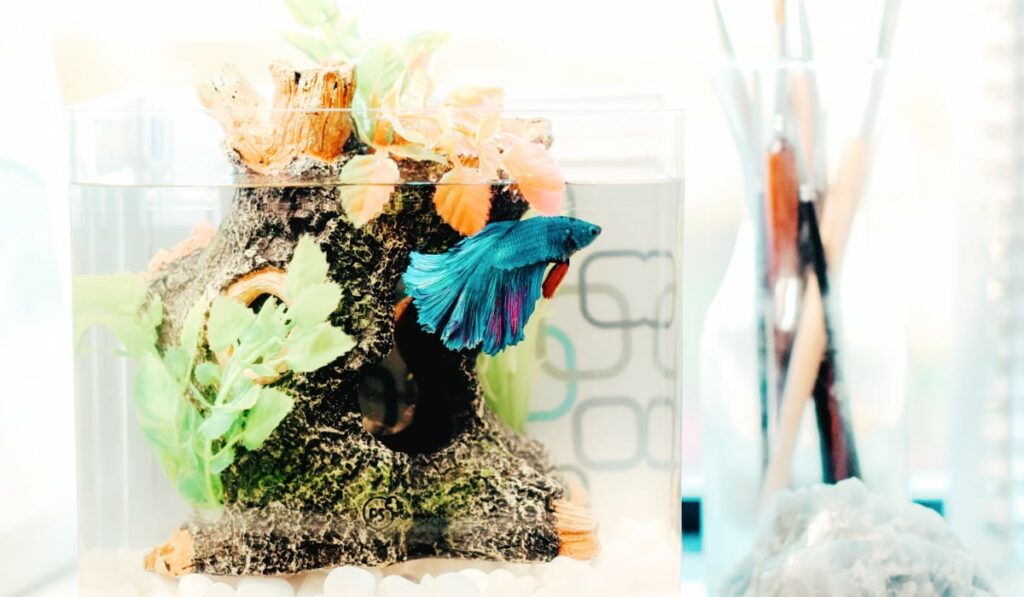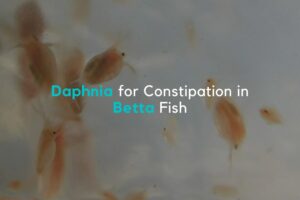Choosing water types for betta fish is crucial before building a tank for bettas. Another thing that contributes to a healthy aquatic environment is the quantity of water. The more water you have in the fish tank, the better filters you need to keep the water clean.
Betta fish can abide by various water parameters. Yet, it does not mean you can use all water for their living environment. You can manage the water for betta fish more carefully to keep them healthy by looking at their tail shape. The following factors also can help you with the betta care guide.
What Type of Water to Use for a Betta Fish?
Deciding water types for betta fish you will use in the tank is essential before you keep a new betta at home. Many freshwater options are available. It might wonder you which is the most suitable one. Below are six water types that can support betta’s life at the tank and how to use them.
Rainwater
It is still debatable to use rainwater for a betta tank. It belongs to the type of water that is acceptable for betta under specific terms and conditions. People who disagree with rainwater use perceive that rainwater contains high nitrogen and pollutants that are unhealthy for bettas.
Rainwater you should not use comes from thunderstorms because it holds the highest nitrogen levels. Apart from it, rainwater is soft and provides a refreshing environment for fish. Performing water testing is the key before using it to ensure it meets water parameters for betta.
Although you have tested the rainwater and it is acceptable, you need to add the filter in the fish tank using activated carbon. It traps the contaminants and pollutants in the water that can cause various diseases in betta fish.
Betta-Specific Water
Betta-specific water is another option you can use for a betta fish tank. People likely misunderstand that it is special water specifically applied to a new betta tank. This water does not contain beneficial bacteria that support betta life.
Instead, it is only plain water with a conditioner. What makes it worse is that betta-specific water usually comes from plastic bottles. There might be contamination from the petrochemicals used in the plastic material. Hence, it is not free from ammonia and disease due to contaminants.
Although betta-specific water is consider suitable for betta fish, you need to perform appropriate water management. It enables you to provide a safe, healthy, and comfortable aquatic environment for betta fish to live.
Bottled Water
Bottled water, frequently addressed as spring water needs to undergo a filtering process once or several times to make use of it is safe to consume. It is the reason why bottled water is frequently considerably soft. Bottled water possibly contains plastic residue or other chemicals.
However, many people still consider it safer than tap water. If using bottled water, it will be better to include a water conditioner. It can be beneficial to protect bettas in case the water contains toxic chemicals.
Using activated carbon is also necessary because it can shut in any contaminants in the water. It makes bottled water safer and healthier for bettas. It is why adding a water conditioner and activated carbon, bottled water becomes an alternative to water types for betta fish.
Distilled Water
Distilled water has lost the whole minerals, making it less suitable for bettas. They require basic minerals to keep them healthy and alive. Distilled water is usually less recommended if you want to create a tank for new bettas or regular use.
However, distilled water can be an alternative if you face an emergency. For instance, if the pH level of water inside the tank is very high or low, you can use distilled water to decrease hardness and makes it softer immediately.
Tap Water
Tap water is one of the suitable water for betta fish after it undergoes several processes. Tap water usually contains chlorine because it functions to kill organisms that can cause various diseases. That is why it is toxic for tropical fish like bettas and can make them die.
However, it does not mean you cannot completely use tap water for a betta tank. Instead, you need to manage the water so it is safe for the fish by adding water conditioner to neutralize the dangerous chemicals. Each region supplies water with different hardness and pH.
Consulting with a water advisory is beneficial for choosing water for betta fish and determining if the tap water contains harmful toxins to bettas. Using activated carbon in the filter can help get rid of pesticides and other chemicals in the water.
Besides, a water conditioner can tie heavy metals and transfer them to any place does not include in the water circulation. Contaminated water needs to undergo a setting up and filtering process for at least one or two days before you can add it to the new betta tank.
Well Water
Well-water suitability for a betta tank relays on its mineral content. The number of minerals varies depending on where the well water flows underground. Most well waters do not contain chlorine or chloramine but there is possible contamination from industrial, farming, or fracking as the pollutants enter the local water.
Doing a water test is necessary to determine the impurities before you make well water as fish tank water for betta fish. Then, you must remove materials that are harmful to bettas. Mostly, adding activated carbon and specific resins in the filter is fairly effective to remove impurities.
Besides, a water conditioner is a standard requirement for a fish tank. It can lock up any heavy metals or copper contaminated the well water that can harm bettas when you use it inside the tank.
Water Parameters for Betta Fish

Before starting a new tank for bettas, you need to equip yourself with information about betta fish water parameters. Two primary parameters play significant roles to provide a safe and healthy environment for bettas. Those two primary parameters are temperature and pH level.
Temperature
The best water temperature that supports betta fish life ranges from 76 to 80 degrees Fahrenheit. It is similar to 24.5 to 26.5 degree Celsius. Water temperature is another vital factor to consider before building a betta tank aside from water type.
That is why, as the betta owner, you must check the water temperature in the tank regularly to ensure it remains safe for your betta fish. The consistency of regular testing and observation of fish behavior is more crucial than sticking to narrower parameters to keep betta fish.
To make you consistent in observing the water temperature, you can use a heater for the betta tank. Then, perform routine checks for the water temperature using a thermometer. It is another step you need to after choosing the suitable water types for betta fish.
pH level
Not just the temperature, but the pH level also matters to keep the betta fish alive. Thus, you need to ensure the water pH level in the fish tank meets the appropriate parameter for betta fish. Bettas likely live well in the water with pH levels between 6.5 and 7.5.
Bettas fish also can survive in a fish tank containing softer water. Besides, they can stand in medium or semi-hard water. The acidic aquatic environment can kill bettas. So, you must check the pH level of water recurrently along with its temperature.
How to Maintain Water for Betta Fish

Aside from water types for betta fish and parameters, water maintenance is also vital to keep bettas’ living environment healthy and safe. Several maintenance ways you can perform into your fish tank can ensure bettas can live inside comfortably and happily.
Water change frequency
You can do water changes based on the size of a fish tank. For instance, if you use a 5-gallons fish tank and are overstocked, you can change the water once in a few days. It helps you make sure the quality of water inside the betta tank does not decrease.
Water quality and water types for betta fish contribute significantly to the healthy aquatic environment inside the fish tank. Meanwhile, if you use a bigger tank like 20 gallons, and are understocked, you can change the water once every two weeks.
Regular cleaning
Regular cleaning becomes a part of betta tank maintenance. It is necessary to keep the water quality remains good and prevents pH level lowering, particularly if you use an unfiltered tank to keep the betta fish. Most betta fish tanks require water change once a week.
Besides using the right water types for betta fish, weekly water changes will keep the water condition inside the tank fresh and healthy. You can change the water during the cleaning routine by removing around 20 to 25 percent of water from the tank.
Then, you can replace it with dechlorinated water. It will reduce the amount of ammonia that can be harmful to your bettas.
Water checking
Not just regular cleaning and changing, water checking is also essential to do. You should perform a water test once a week at a minimum. Water testing allows you to know about the ammonia, nitrate, and nitrite levels in the tank. It enables you to discover the ph levels too.
However, it is a bit different for a new betta tank. After choosing the suitable water for betta tank, you need to check the water once a few days. It is to convince that the cycling process runs successfully.
Keeping up the water maintenance is crucial to support betta fish’s health. Bad water quality often contributes to lethargy in several betta fish. You can use an aquarium testing strip or freshwater master test kit to check the water conditions inside the betta tank.
Water cycling
You can perform water cycling in two ways, a fish-in cycle or a fishless cycle. Like its name, when you choose a fish-in cycle, it means you cycle the tank with a live fish. However, you need to consider the side effects for the fish who cycle the tank because they likely die.
Otherwise, they can be weaker day by day because of ammonia poisoning and stress. Thus, you must select water types for your betta and the water cycling method carefully. Fishless cycling offers a more ethical and safer option so it will be better if you cycle the water using this method.
A fishless cycle needs an ammonia source to help cycle the water. Several ammonia sources you can use like pure ammonia, raw fish, or fish flakes. You can put them directly in the water and they will become food to develop good bacteria in the fish tank.
You can use an aquarium test strip to check the ammonia, nitrate, and nitrite because it is crucial for water cycling. You can determine that a betta tank is fully cycled if it does not contain ammonia and nitrite and only have nitrates.
Water dechlorinating
After choosing water types for betta fish, you need to dechlorinate the water in the tank before using it to keep betta fish. There are two methods of water dechlorinating you can do. You can add a water conditioner or set the tap water for at least one day.
The natural process of dechlorinating tap water usually requires 5 days depending on the chlorine concentrations in the water. Remember that chlorine and chloramine require different removal. Chlorine can evaporate from the water but chloramine needs a water conditioner for its removal.
The best water types for betta fish are specifically prepared betta water and dechlorinated tap water. Instead of worrying too much about the water sources, it will be worth it if you focus more on the pollutants in the water that can harm your betta fish.
Thus, checking the water quality before pouring it into the tank is very necessary. Doing so helps you to determine if the water meets the parameters for betta fish. Then, you need to remove the pollutants and contaminants by adding a water conditioner or activated carbon to the filter.



